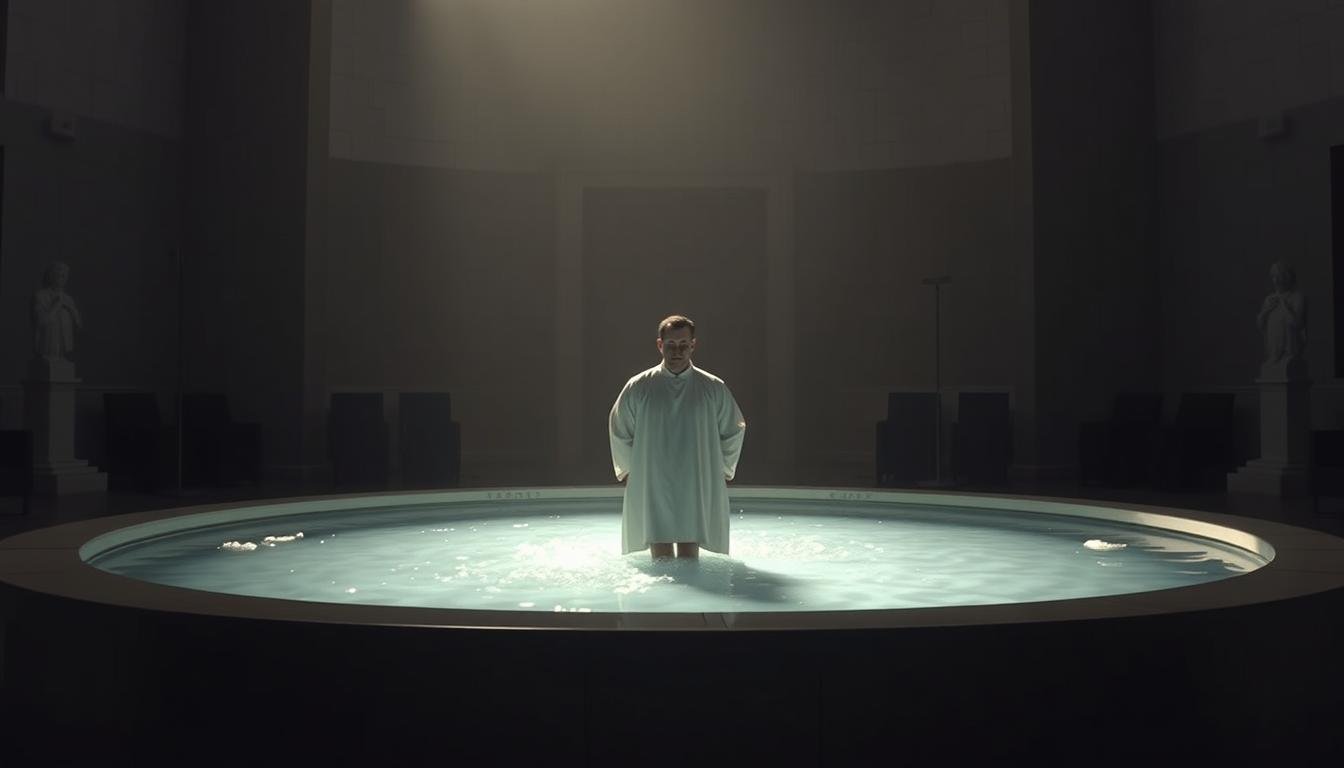Last updated on October 20th, 2025 at 12:05 pm
How Mormons Baptize the Dead? Have you heard about the LDS Church’s unique practice of baptizing the dead? It’s a big part of the Mormon faith.
The LDS Church does baptisms for people who have passed away. This lets them decide in the afterlife if they want to accept it. They believe baptism is key for salvation.
Looking into Mormon baptism practices, you’ll see proxy baptism’s role. It’s a way for the living to give their ancestors a chance at salvation. It shows how much family means in the LDS Church.
Contents
- 1 The Theological Foundation of Baptism for the Dead
- 2 Historical Development of Proxy Baptisms
- 3 Why Mormons Perform Baptisms for the Dead
- 4 The Temple: Sacred Space for Proxy Ordinances
- 5 Preparation for Performing Proxy Baptisms
- 6 How Do Mormons Baptize the Dead: The Actual Ceremony
- 7 Genealogical Research and Family History Work
- 8 Personal Experiences and Spiritual Significance
- 9 Common Misconceptions and Controversies
- 10 Conclusion: How Mormons Baptize the Dead?
- 11 FAQ
- 11.1 What is baptism for the dead in the LDS Church?
- 11.2 Why do Mormons believe baptism is necessary for salvation?
- 11.3 How do Mormons identify deceased individuals for baptism?
- 11.4 Can deceased individuals reject baptism performed on their behalf?
- 11.5 Where are baptisms for the dead performed?
- 11.6 What is the significance of temples in Mormon worship?
- 11.7 How does baptism for the dead relate to genealogy?
- 11.8 Is baptism for the dead a controversial practice?
- 11.9 How does baptism for the dead impact Mormons’ understanding of their connection to their ancestors?
The Theological Foundation of Baptism for the Dead
The LDS Church’s practice of baptism for the dead is based on a deep theological belief. It highlights the role of ordinances in the plan of salvation. Baptism is seen as crucial for all, alive or deceased, to reach God’s presence. [How Mormons Baptize the Dead?]
In LDS theology, baptism is a promise between the individual and God. The person vows to follow God’s commandments and remain faithful. This promise is key for achieving exaltation and eternal life. Proxy baptism for the dead allows those who have passed away to accept or reject this promise in the afterlife.
The Importance of Baptism in LDS Theology
Baptism is a central element in LDS theology. It is the first step towards other essential ordinances like confirmation, endowment, and sealing. The Church believes baptism is necessary for sin forgiveness and must be done by those with the right authority.
The practice of baptism for the dead shows the LDS Church’s belief in a loving God. It offers salvation to all, living and dead. It also emphasizes the importance of family and eternal family bonds in LDS theology.
By doing proxy ordinances, LDS Church members help their ancestors and others achieve salvation. This shows their dedication to the idea of eternal families.
Historical Development of Proxy Baptisms
Understanding the history of proxy baptisms is key to seeing its importance in Mormon practices. This practice started early in the LDS Church and has grown over time.
In the 1840s, Joseph Smith introduced proxy baptism. He believed it could give salvation to those who died without being baptized. This idea came from the belief that baptism is crucial for salvation and that people can convert after death.
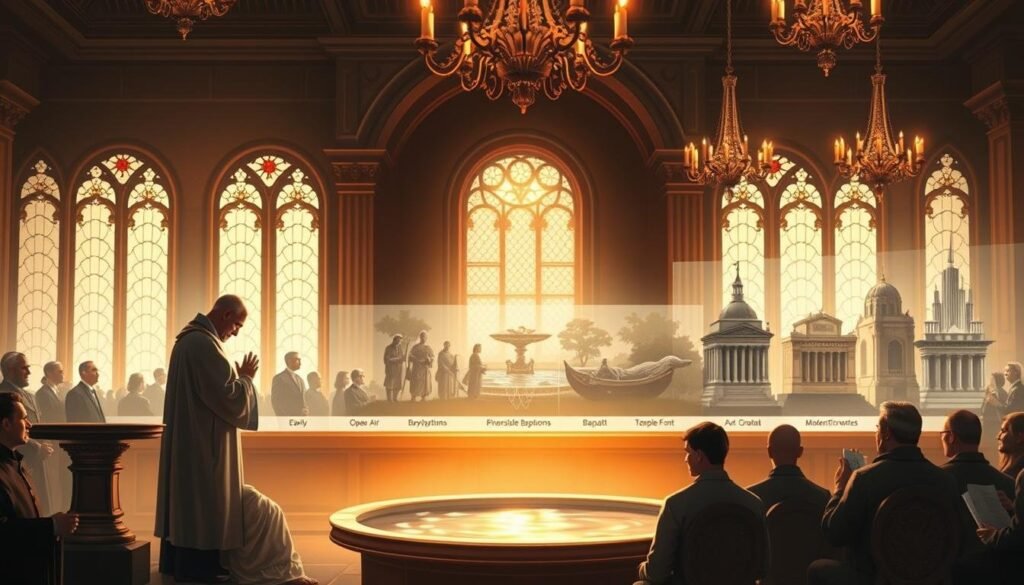
Proxy baptism is closely linked to the LDS Church’s temples. These temples are special places for performing these sacred ordinances. [How Mormons Baptize the Dead?]
| Period | Significant Events | Impact on Proxy Baptism |
|---|---|---|
| 1840s | Introduction of proxy baptism by Joseph Smith | Established the theological foundation |
| Late 19th Century | Construction of temples | Provided sacred spaces for proxy ordinances |
| 20th Century | Advancements in genealogical research | Enhanced the ability to identify ancestors for proxy baptism |
The growth of proxy baptism shows the LDS Church’s deep commitment. It aims to offer salvation chances to everyone, alive or dead. [How Mormons Baptize the Dead?]
Why Mormons Perform Baptisms for the Dead
Have you ever wondered why Mormons baptize people who have died? They do this because they believe baptism is key to salvation. They think that even those who have passed away might have a chance to accept or reject baptism in the afterlife.
Mormons see baptism as a vital step towards eternal salvation. But they know not everyone gets to be baptized in life. That’s why they have proxy baptism. It lets them baptize for the dead, giving them a chance to accept or reject baptism later.
The idea of proxy baptism comes from the LDS Church’s views on the afterlife. Mormons believe that even after death, people can make choices. They think that the baptisms done for the dead can affect their eternal future.
So, proxy baptisms are a way to show love and service to our ancestors. It’s a way for Mormons to connect with their family history and make sure their loved ones have a chance to receive gospel blessings. [How Mormons Baptize the Dead?]
The Temple: Sacred Space for Proxy Ordinances
In the Mormon faith, temples are seen as sacred places. They are where proxy ordinances, like baptism for the dead, are done. These temples are not just for worship. They are made for performing ordinances for those who have passed away.
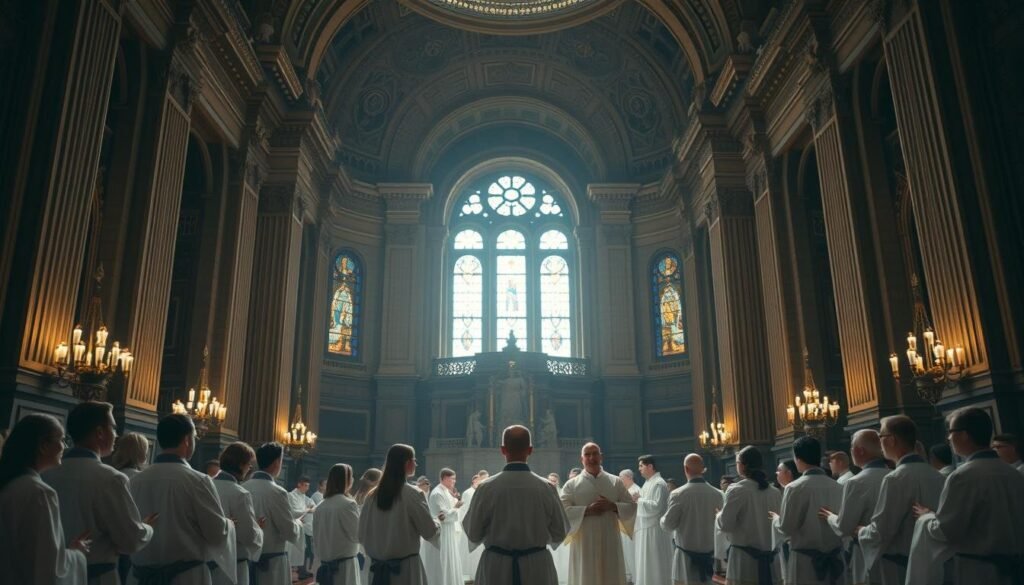
Temples hold a special place in LDS temple worship. They are considered holy. Members go there to do proxy baptism and other ordinances for their ancestors. This is based on the belief that these acts can bring spiritual benefits to the deceased.
Temple Ceremonies and Baptism for the Dead
Temple ceremonies are carefully planned to honor the sacred nature of the ordinances. Proxy baptism is a key ritual. It’s where a living person is baptized for someone who has died. This is seen as a chance for the deceased to accept or reject the baptism in the afterlife.
The preparation and reverence for these ceremonies show their importance in the LDS faith. Mormons believe they are helping their ancestors. They see it as a way to contribute to a bigger work that goes beyond their lives.
Preparation for Performing Proxy Baptisms
Before Mormons can perform baptisms for the dead, they must prepare. This includes personal study, temple attendance, and genealogical research. This preparation is key to ensure the ordinances are performed with respect and accuracy.
Genealogical research is a big part of preparing for proxy baptisms. Members of the LDS Church are urged to research their family history. They look for deceased individuals to perform baptisms for. [How Mormons Baptize the Dead?]
This research is not just about names and dates. It’s about connecting with ancestors and understanding their lives. The process involves compiling family histories and submitting names for proxy baptisms.
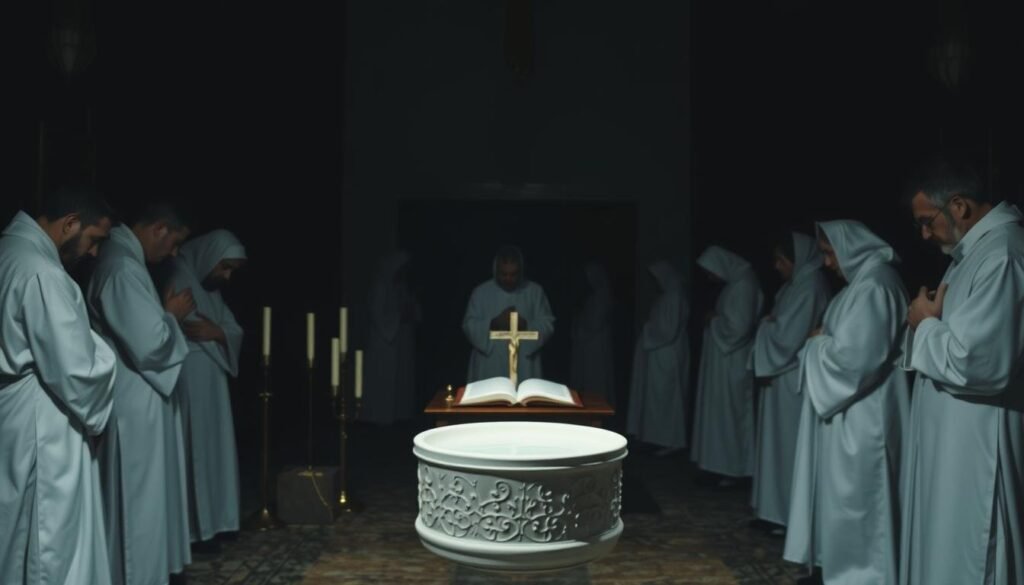
The LDS Church offers many resources for this research. They provide access to historical records and guidance on family history research. Members are also encouraged to take part in temple activities to perform these ordinances.
| Preparation Steps | Description |
|---|---|
| Genealogical Research | Researching family history to identify deceased individuals for proxy baptisms |
| Temple Attendance | Participating in temple activities to perform ordinances |
| Personal Study | Studying church doctrine to understand the significance of proxy baptisms |
By following these steps, Mormons feel they are helping their ancestors. They believe they are contributing to a greater purpose. The preparation for proxy baptisms is a meaningful process that connects the living with the dead. It’s a unique aspect of LDS Church practices.
How Do Mormons Baptize the Dead: The Actual Ceremony
The LDS baptism ceremony for the dead is a deeply spiritual ritual. It takes place in LDS temples with great care and devotion. You’re about to see or participate in a key ordinance that Mormons believe helps the deceased find salvation.
The ceremony starts with a living proxy, usually a baptized and confirmed LDS member. They perform the baptism on behalf of the deceased. The baptism by immersion symbolizes washing away sins. The proxy is fully clothed and baptized in a font or basin, representing the bond between the living and the dead.
During the baptism, the person says, “I baptize you, the name of the deceased individual, in the name of the Father, and of the Son, and of the Holy Ghost. Amen.” This is done by immersion, where the proxy is fully submerged under water. It’s believed to give the deceased a chance to accept or reject the ordinance in the afterlife.
After baptism, a confirmation may follow. This involves laying hands on the proxy by authorized priesthood holders. They confer the gift of the Holy Ghost upon the deceased. The proxy acts on behalf of the deceased, and this ordinance is crucial for their spiritual growth.
The significance of these ordinances is rooted in the belief that they offer the deceased essential steps towards exaltation in the afterlife. Mormons believe that those who have passed away can accept or reject these ordinances in the spirit world. The temple ordinances are a way to show love and respect for the deceased, fulfilling the Mormon doctrine of salvation for the dead.
The LDS Church emphasizes the importance of these ordinances being performed by living proxies. This unique aspect of Mormon theology shows the connection between the living and the dead. It also highlights the belief in a continued chance for salvation beyond mortality.
Genealogical Research and Family History Work
The Church of Jesus Christ of Latter-day Saints values genealogical research a lot. For Mormons, it’s more than just tracing family lines. It’s a key religious practice that connects them with their ancestors.
Genealogical research is about collecting and studying information on ancestors. Mormons believe it helps them find their ancestors. They then perform sacred acts, like baptism, for them. This is because they think these acts can help their ancestors in the afterlife.
There are many tools to help with genealogical research. Mormons use historical records, family trees, and DNA analysis. These tools help them build detailed family histories. They use these to find people for whom they can perform ordinances.
Key Resources for Genealogical Research
| Resource | Description | Utility |
|---|---|---|
| FamilySearch | A comprehensive database provided by the LDS Church | Access to historical records and family trees |
| Genealogical Records | Historical documents such as census data and birth records | Verifying lineage and identifying ancestors |
| DNA Analysis | Genetic testing to determine familial connections | Confirming relationships and expanding family trees |
By doing family history work, Mormons can take part in baptism practices. They perform ordinances believed to help their ancestors spiritually. This strengthens family ties and meets a religious duty to care for the deceased.
In summary, genealogical research and family history are crucial for Mormons, especially for baptism for the dead. These practices help Mormons honor their heritage and meet their religious duties.
Personal Experiences and Spiritual Significance
Proxy baptism can deeply resonate with your spiritual journey. For many in The Church of Jesus Christ of Latter-day Saints, it’s a way to connect with ancestors. It also fulfills a key religious duty.
This practice offers salvation to those who missed out on baptism in life. By doing proxy baptisms, you help your ancestors eternally. It’s a sacred duty that brings peace and fulfillment.
People often feel a deep sense of peace and fulfillment after participating. It strengthens family bonds across generations. It shows love and concern for family, both in life and afterlife.
Doing genealogical research and temple work can connect you deeply with your ancestors. This connection helps you understand your place in family history. It also enriches your view of the human experience.
Common Misconceptions and Controversies
The LDS Church’s practice of proxy baptism has faced a lot of misunderstanding and criticism. Many think the Church is trying to convert the dead to Mormonism. [How Mormons Baptize the Dead?]
But, the LDS Church says proxy baptism is not about converting anyone. It’s about giving those who have passed away a chance to accept or reject baptism in the afterlife. This belief is based on the LDS doctrine of agency, which says people can make their own choices, even after death.
Critics often say that performing baptisms for people without their consent is wrong. They argue it disrespects the deceased. The LDS Church responds by saying that temple work is done with the understanding that the deceased can choose to accept or reject it.
There are also misconceptions about proxy baptism due to a lack of understanding about the Church’s genealogical research. The Church encourages members to research their family histories. This helps find ancestors who may not have had the chance to receive ordinances during their lifetimes.
Some of the controversies come from not understanding the temple and its role in LDS worship. The temple is seen as a sacred place where important ordinances, like proxy baptisms, are performed.
In conclusion, while there are controversies and misconceptions about proxy baptism, understanding the LDS perspective can help clear things up. It shows the importance of this practice within the Mormon faith.
Conclusion: How Mormons Baptize the Dead?
Baptism for the dead is key in Mormonism. It shows the LDS Church’s focus on family, salvation, and eternal bonds. This practice is based on the church’s beliefs and has grown through temple rituals and genealogy.
This practice helps those who died without baptism. It’s a crucial part of LDS baptism practices. It shows the church’s dedication to helping everyone in the afterlife.
Members of the LDS Church keep this tradition alive by doing proxy baptisms. It’s a practice that goes beyond life and death. You can learn more about it through the LDS Church’s official sites. This will help you understand the importance of baptism for the dead in Mormonism.
See Also: Are Mormons Behind Chick-fil-A? The Surprising Truth
FAQ
What is baptism for the dead in the LDS Church?
Baptism for the dead is a ritual in the LDS Church. Mormons do this on behalf of those who have passed away. It lets them choose to accept or reject baptism in the afterlife.
Why do Mormons believe baptism is necessary for salvation?
Mormons see baptism as key for salvation. They believe it’s needed for exaltation in the celestial kingdom. It also lets people make promises with God.
How do Mormons identify deceased individuals for baptism?
Mormons find ancestors and others for proxy baptisms through genealogy. They do this through family history and historical records.
Can deceased individuals reject baptism performed on their behalf?
Yes, LDS theology says the dead can accept or reject baptism in the afterlife. It’s their choice. [How Mormons Baptize the Dead?]
Where are baptisms for the dead performed?
These baptisms happen in LDS temples. These places are sacred for proxy ordinances and other ceremonies.
What is the significance of temples in Mormon worship?
Temples are key in Mormon worship. They’re where Mormons do baptisms for the dead and make promises with God. These acts are central to their faith.
How does baptism for the dead relate to genealogy?
Genealogy is vital for baptism for the dead. Mormons use it to find people to baptize. This connects their living to their ancestors.
Is baptism for the dead a controversial practice?
Yes, it’s a topic of debate. Some doubt its theology, while others worry about baptizing without consent. [How Mormons Baptize the Dead?]
How does baptism for the dead impact Mormons’ understanding of their connection to their ancestors?
Baptism for the dead deepens Mormons’ bond with their ancestors. They believe it helps their loved ones and strengthens family ties beyond death.
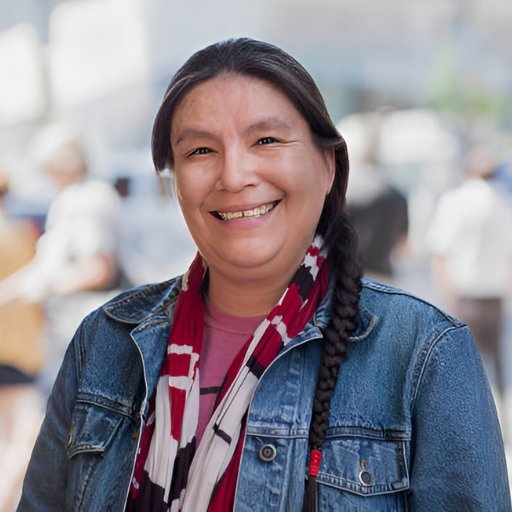
Ramona Pearson from the USA is an experienced religious researcher and writer with over 10 years studying Mormon history, beliefs, and culture. She creates accurate, insightful content to educate and inform curious readers worldwide.

